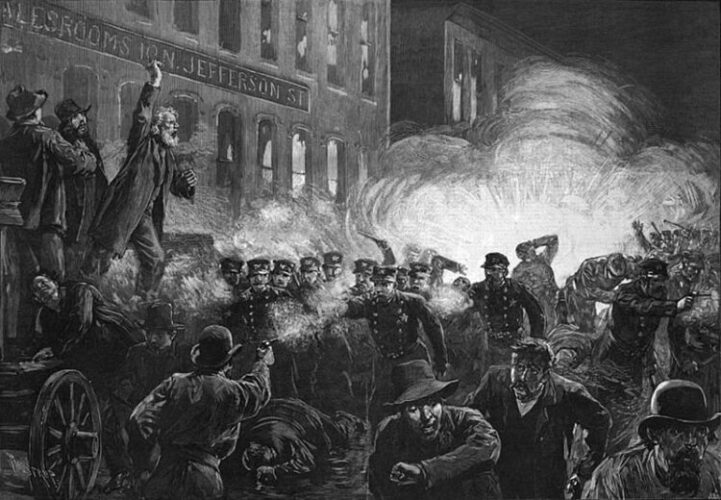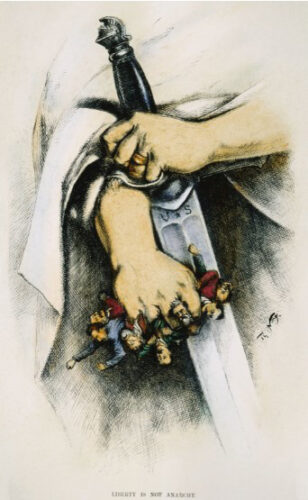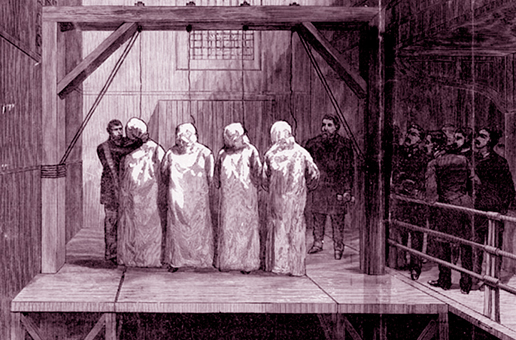By Osvaldo Rodriguez Martinez, special to Workers
Eight hours of work, eight hours of sleep and eight hours at home was the demand known as the 888, promoted by British labor movement leader Robert Owen (1771-1858).
In his work, Engels wrote: “All social movements, all real progress, recorded in England in the interests of the working class, are associated with the name of Owen.” From utopian socialism to scientific socialism (1882).

The trend to reduce stressful days between 14 and 17 hours a day was echoed in the United States, where the Ingersoll Act, signed into law by then-President Andrew Johnson in 1868, mandated eight hours for federal office workers and public works workers.
But the industrialists considered it fair to apply the measure in factories. In Chicago, the nation’s major manufacturing center, demand soared that became a crisis on May 1, 1886, when they outraged the city and called a general strike that was supported by some 200,000 workers and mass protests.
The police brutally attacked the demonstrators, and clashes broke out, killing six workers and injuring dozens, according to a Research published in 2021 By the history section of the US National Geographic website.
The effect worsened the morale of the plaintiffs and journalist Adolf Fischer, a newspaper editor Chicago Arbiter ZeitungAn anarchist newspaper written in German issued a call to strike back forcefully against the oppressors.
Let’s respond to white terror with red terror. Yesterday the wives and children of the poor wept for their husbands and fathers who were shot, while in the mansions of the rich they fill cups with expensive wine and drink to the health of the bandits … Dry your tears! who suffer! Have courage, slaves! stand up! Read the leaflet distributed in thousands of copies.
The fourth day of the protest was attended by Mayor Carter Harrison, who authorized the operation under the eyes of local police. And National Geographic confirmed that an explosive device, during a speech by one of the leaders, left the crowd behind and exploded against the soldiers, resulting in six dead and about sixty wounded.
The repression that followed resulted in 38 deaths and 115 injuries among the workers, in addition to the arrest of 31 trade unionists accused, without evidence, of launching the explosive. Several sources described the ensuing judicial process as a farce.
They unleash repression against the labor movement
This was the starting point for a real “witch hunt” against the American labor movement. The investigation indicated that the police raids followed one another, and the number of arrests reached hundreds.
Meanwhile, the press, led by Dr Indianapolis Journalhe Chicago Tribune And New York timesHe called the strikers “crooks and criminals”, and called their protests “crazy” for demanding an eight-hour work day.

“Hang the savage murderers, the communist fools, the bloodthirsty beasts, the bomb makers, the rabble who are nothing more than the remnants of Europe that sought our shores to abuse our hospitality and challenge the authority of our nation, and that in all these years they have done nothing but proclaim seditious and dangerous doctrines!
This newspaper talk fueled a thirst for revenge against the workers, and eventually eight union leaders were brought to court, none of whom could be proven to have carried out the dynamite attack, but seven were sentenced to death and hanged for 15 years. in prison.
The prosecution could not identify the person who threw the explosives and could not bring to justice the true perpetrator, but the Supreme Court upheld the guilty verdict in the fall of 1887, although the death sentence was commuted in two to life imprisonment.

Georg Engel, Adolf Fischer, Albert Parsons (was not at the scene), August Spies and Louis Laing (who committed suicide one day before the execution), were sentenced to death; Samuel Fielden and Michael Schwab, to life in prison; and Oscar Nepi to 15 years’ hard labour. The group is known as the Chicago Martyrs.
The authorship of the attack has not been confirmed, however, American historians James Jull and Timothy Messer-Cruz assert that the evidence points to Rudolf Schnaubelt, Schwab’s son-in-law, while other texts repeat authorship without providing evidence of guilt.
John Peter Altgeld took over as Governor of Illinois years later. In response to a petition for pardon signed by 60,000 people, and after a thorough investigation, he granted a belated full pardon to Samuel Fielden, Oscar Neebe, and Michael Schwab on June 26, 1893, the only survivors at the time.
Crime committed in the name of the law
For jurists, historians, trade unionists, and political scientists, it was a crime committed in the name of the law. One hundred and eleven years later, on February 18, 1997, the humble memorial erected in the Woodland Home Cemetery, in memory of those executed, was declared a National Historic Landmark.

In 1889, the Socialist Workers Congress of the Second International had proclaimed International Workers’ Day, commemorating the martyrs of Haymarket Square, as they were also known as the scene in which the events took place in Chicago. Only the United States does not celebrate this date.
As the spies said moments before his execution: “The voice you will strangle will be stronger in the future than the number of words I can speak now.”

“Unapologetic tv specialist. Hardcore zombie trailblazer. Infuriatingly humble problem solver.”
